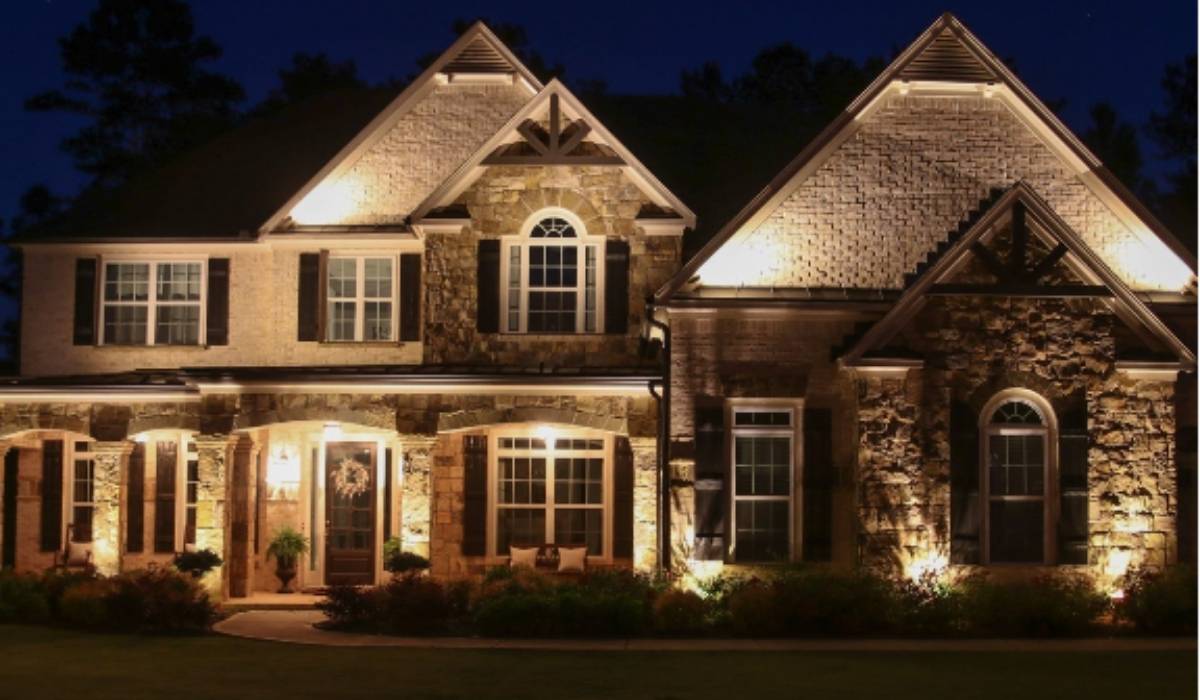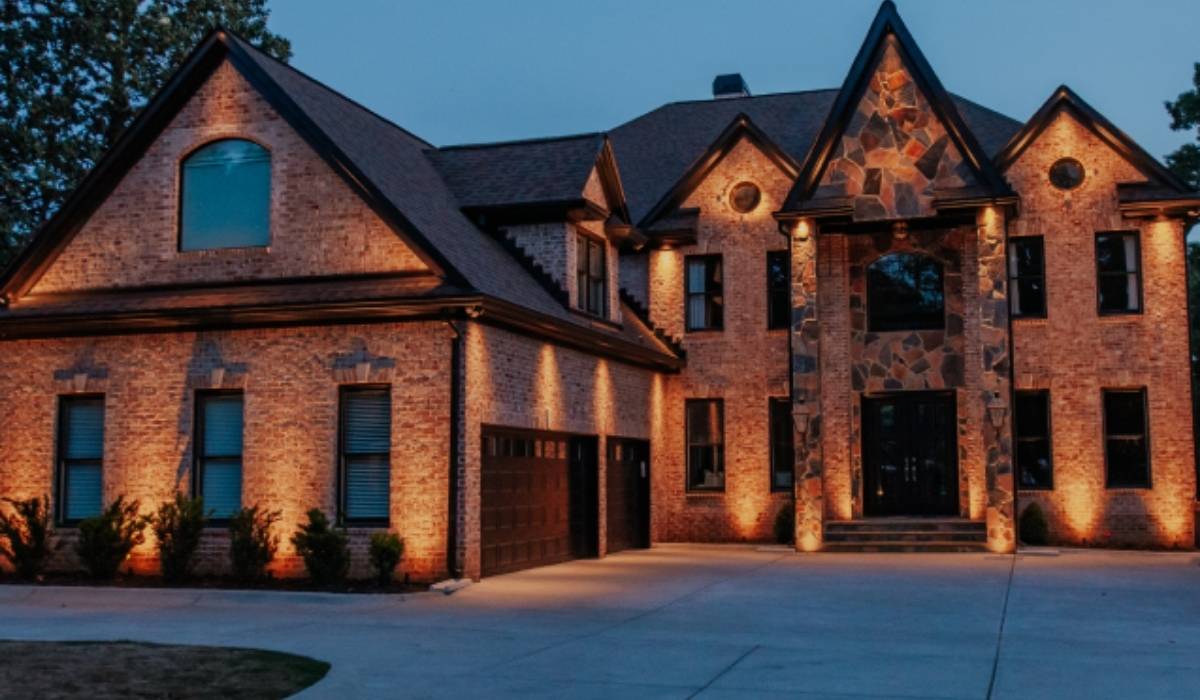The exterior of your home is the first impression you make on guests—and a reflection of your personality and style.
Whether you’re aiming for added security, increased curb appeal, or a welcoming ambiance, custom residential lighting installation is the key to unlocking your home’s full potential.
With carefully designed and professionally installed lighting, you can highlight architectural features, illuminate pathways, and create the perfect setting for outdoor entertaining.
In this article, we’ll explore how custom outdoor lighting can truly transform your living space, boost your property value, and enhance your lifestyle.
The Power of Outdoor Lighting
Outdoor lighting goes beyond just visibility. It sets the mood, defines spaces, and brings your landscape to life at night.
From highlighting the natural beauty of gardens and trees to showcasing elegant masonry and architectural elements, a personalized lighting plan adds layers of visual interest to your home’s exterior.
Many homeowners underestimate the impact lighting can have. Imagine walking up to a dark, poorly lit home compared to one softly glowing with perfectly placed uplights, downlights, and path lights.
The latter not only feels more inviting—it is more secure and functional. That’s the difference custom residential lighting installation can make.
Why Choose Custom Residential Lighting?

The word “custom” changes everything.
Unlike generic lighting kits from a home improvement store, a custom lighting solution is designed specifically for your home’s layout, architecture, landscaping, and your personal preferences.
1. Tailored to Your Home’s Unique Features
Every home has distinctive elements—a beautiful stone wall, a grand entrance, a stately oak tree, or a tranquil backyard garden.
Custom lighting allows you to highlight those features in a way that standard solutions simply can’t match.
2. Improved Safety and Security
Walkways, stairs, driveways, and entrances should be well-lit to prevent accidents and deter unwanted visitors.
With custom residential lighting installation, you can strategically place fixtures in high-risk or high-traffic areas without over-lighting or creating harsh glares.
3. Enhances Curb Appeal
A well-lit exterior makes your home look elegant, cared for, and valuable.
When selling your home, a beautifully lit yard and facade can make all the difference in first impressions—especially during evening showings.
4. Energy Efficiency and Smart Technology
Modern custom lighting uses LED technology, which consumes far less energy than traditional bulbs and lasts much longer.
You can also integrate smart controls to schedule lighting scenes, dim lights remotely, or trigger them with motion sensors.
Types of Outdoor Lighting Options
A well-rounded lighting design combines different types of outdoor lighting to achieve balance, functionality, and beauty. Here are some popular options:
Pathway Lighting
Guide guests along garden paths or walkways with low-profile fixtures. These not only provide safety but also add charm and direction to your landscape.
Accent Lighting
Spotlights and well-lights can draw attention to focal points like trees, sculptures, water features, or architectural elements.
Deck and Patio Lighting
Incorporate lighting into steps, railings, or under seating to create a relaxing ambiance for nighttime gatherings.
Wall Wash Lighting
Soft, even lighting can gently illuminate walls or fences, adding depth and character to otherwise blank surfaces.
Downlighting and Moonlighting
Mounted in trees or high structures, these lights mimic natural moonlight, casting a soft glow over lawns or patios.
Security Lighting
Motion-activated lights around entry points can deter intruders and ensure visibility in critical areas.
Designing the Perfect Lighting Plan
The best outdoor lighting designs are those that blend form and function.
A lighting professional begins by assessing your property, identifying key features to highlight, and determining your practical needs.
Here’s how a successful design typically comes together:
Step 1: Site Analysis
Every landscape is unique.
A site analysis involves evaluating the terrain, existing vegetation, architectural style, and power sources.
The designer will look at how light and shadows interact on your property.
Step 2: Client Consultation
You’ll discuss your goals—whether you want to create a cozy backyard retreat, a dramatic entryway, or a fully lit perimeter for safety.
This is the time to consider your preferred style, color temperatures, and lighting control preferences.
Step 3: Fixture Selection
Fixtures come in a variety of finishes, shapes, and materials.
Your designer will select options that complement your home and withstand your local climate.
Step 4: Strategic Placement
Placement is everything.
The right angle, height, and beam spread ensure that lights enhance your property rather than overwhelm it.
Step 5: Installation
A custom residential lighting installation requires precise wiring, correct transformer placement, and proper sealing against the elements.
Hiring professionals ensures your system performs optimally and meets electrical codes.
The Benefits of Hiring a Professional Lighting Installer
While some DIY lighting kits seem tempting, professional installers bring a wealth of knowledge, creativity, and technical skills that elevate your project.
Expert Design
Pros understand how to balance brightness, minimize light pollution, and create layered lighting effects.
They know which fixtures work best for which applications and how to avoid common mistakes like hot spots or glare.
Seamless Integration
Professionals ensure your new lighting integrates with your home’s existing architecture and landscaping.
They can even help automate your lighting system for added convenience and efficiency.
Long-Term Reliability
Quality lighting components and skilled installation ensure your system stands the test of time.
Plus, professionals often offer warranties and maintenance plans.
Budgeting for Your Outdoor Lighting Project
The cost of custom residential lighting installation varies depending on the size of your property, the number of fixtures, and the complexity of the design.
While it’s true that custom lighting is an investment, it pays off in several ways:
- Increased home value
- Lower energy bills (with LED and innovative options)
- Reduced risk of accidents
- Improved security
- Enhanced outdoor living spaces
Start with a realistic budget and talk to your lighting designer about phases. You might begin with the front yard and expand into backyard or pool lighting later.
Seasonal and Holiday Lighting Add-Ons
Once you have a foundational lighting system in place, you can get creative with seasonal changes.
Add warm tones for fall, cool whites for winter, or even colored lighting for holiday displays.
Many custom systems include interchangeable filters or smart bulbs that allow for seasonal customization without reinstallation.
Maintenance Tips to Keep Your Lights Shining Bright
To get the most out of your lighting system:
- Clean fixtures regularly to remove debris and dirt.
- Trim back plants and trees that block light beams.
- Replace bulbs with the same type and wattage as the original.
- Schedule a yearly inspection with your installer to check connections and transformer health.
Routine maintenance keeps your custom residential lighting installation looking flawless and functioning efficiently year-round.
Conclusion: Let Your Home Shine
Transforming your home with custom outdoor lighting is more than a design choice—it’s a lifestyle upgrade.
Whether you’re seeking elegance, safety, or functionality, the proper lighting can redefine your exterior space and how you use it.
With custom residential lighting installation, you’re not just adding lights—you’re crafting experiences, highlighting beauty, and extending your living space far beyond the walls of your home.
So, why settle for a dark and uninviting exterior when your dream outdoor sanctuary is just a lighting design away?
FAQs
What is a custom residential lighting installation?
Custom residential lighting installation involves designing and installing personalized outdoor lighting systems explicitly tailored to your home’s architecture, landscape, and personal style. This includes selecting the right fixtures, placement, and control systems for optimal aesthetics, functionality, and energy efficiency.
Why should I choose custom lighting over DIY solutions?
DIY kits often offer limited options and can result in uneven lighting or unsafe installations. Custom lighting is professionally designed to highlight your home’s unique features and ensure proper electrical setup, creating a safer, more visually appealing result.
How much does a custom residential lighting installation cost?
Costs vary based on property size, number of fixtures, design complexity, and the type of lights used. On average, homeowners can expect to invest anywhere from $2,500 to $10,000 or more for a complete custom installation. Many professionals offer phased installation to help with budgeting.
What areas of my home can benefit from outdoor lighting?
Popular areas include entryways, walkways, driveways, patios, decks, gardens, fences, and architectural features like columns or walls. Proper lighting in these areas improves both safety and curb appeal.
Is custom lighting energy-efficient?
Yes! Most custom systems use energy-efficient LED lights, which consume less electricity and last longer than traditional bulbs. Smart controls can further reduce energy use by allowing for automated schedules, motion sensors, and dimming options.
How long does it take to complete a custom residential lighting installation?
Depending on the scope, most installations take one day to a week. However, more significant properties or complex designs may require more time for planning and execution.
Will outdoor lighting increase my home’s value?
Absolutely. A well-lit exterior boosts curb appeal and perceived value, which is especially important if you’re planning to sell. It also improves security and functionality, which are key selling points for buyers.
Can custom lighting systems be controlled remotely?
Yes, many modern systems integrate with smart home technology. You can control lights via mobile apps, voice assistants, or automated schedules, giving you complete flexibility and convenience.
Do I need a permit for a custom residential lighting installation?
This depends on your location and the scope of the project. In many cases, low-voltage lighting does not require a permit, but any work involving new wiring or electrical panels might. Your installer will know your local codes and can guide you through the process.
How do I maintain my outdoor lighting system?
Routine maintenance includes cleaning fixtures, replacing burned-out bulbs, checking for exposed wires, and trimming plants that may obstruct light beams. Your lighting professional should inspect your home yearly to ensure everything remains in perfect working condition.




